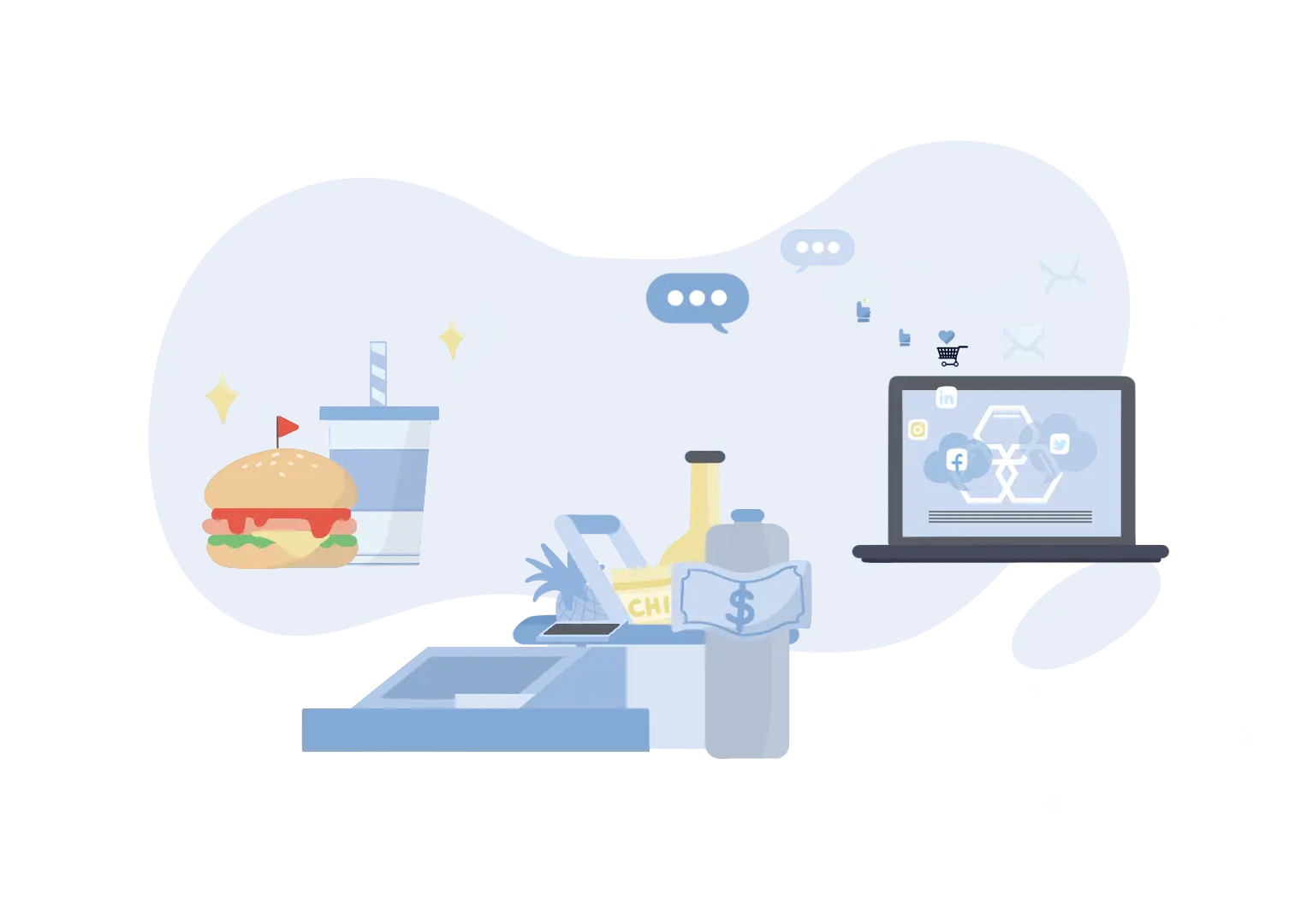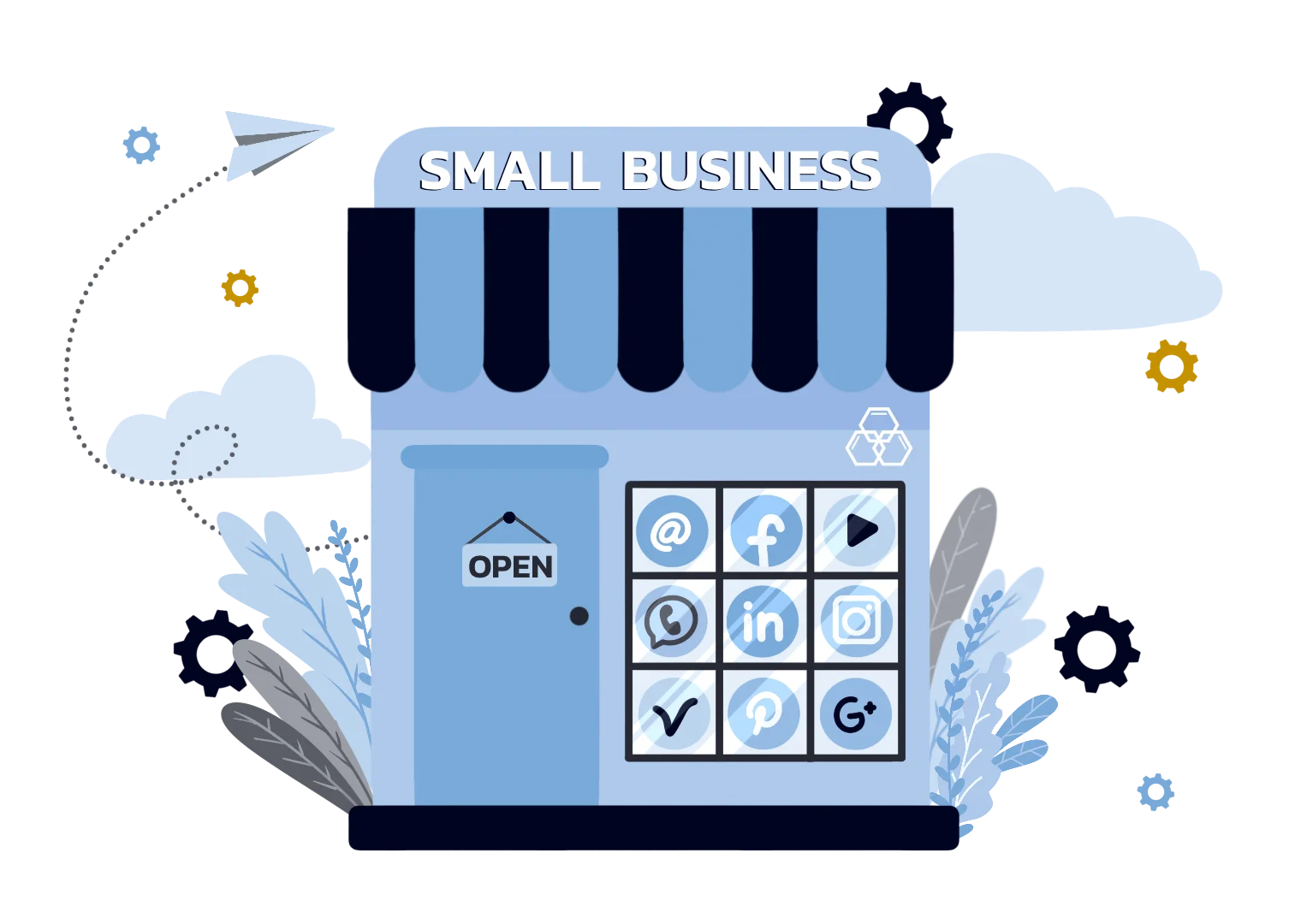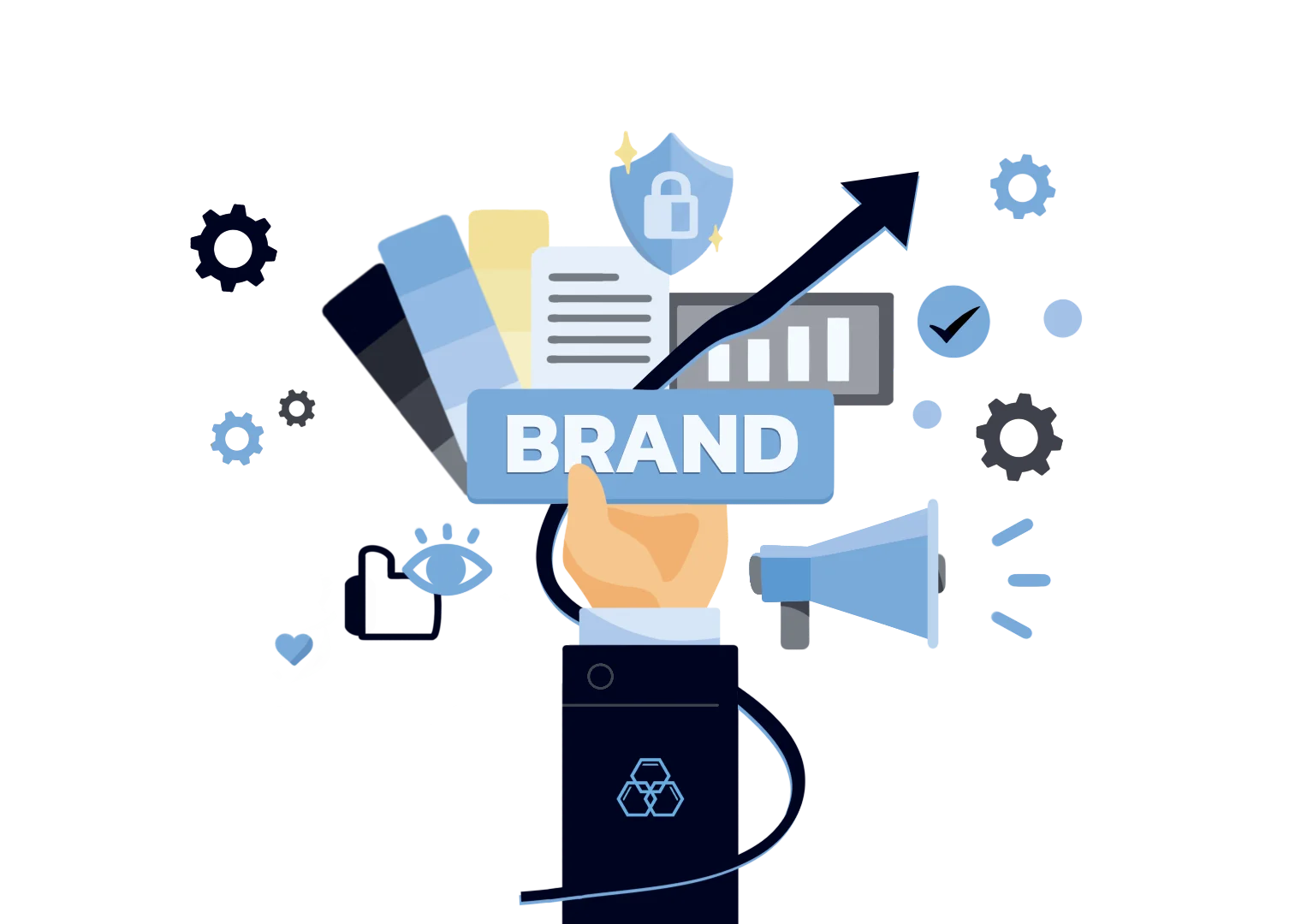The consumer market may seem easy to understand. After all, it is everywhere and is certainly closely connected to brand building. But the term has different meanings, and expanding its definition will help you figure out the phases of your product and brand development, like research, target audience analysis, and to create innovative product ideas.
This guide will explore the concepts around consumer markets, how it plays a vital role in the economic sector, and how your knowledge of it helps you build your branding and marketing strategies.
Let's get started!
What is a Consumer Market - as a Marketplace?

If we define the consumer market, emphasizing the market, it is the transaction of goods in which a business directly sells a product to an individual or group who consumes products for their own use. Products may not have to be something physical; they can be in the form of a service. The consumer market is the basic form of distribution of goods, which only involves two parties for the transaction of value and product. For example, if you wanted to buy Jordans, the definition of the consumer market is true if you buy it from Nike's official brick-and-mortar store or from their website. In a case where you bought it from, say, an affiliated shoe store, there is now a third party in the process of getting the product. Thus, it is considered a business market.
The consumer market audience is most consumers - those who directly buy products to use them. Marketing campaigns often involve getting as many customers as possible or at least catering to their core customer base. For a long time, the relationship between the brand and the customers has been short and is only mediated by the brand products, but modern B2C (business-to-customers) are building brand loyalty from their customers, to make it easier for the company to introduce newer products.
To Differentiate: Consumer Market and Other Types of Market
Let's learn what are the other types of markets for comparison, as well to understand how these types intersect with one another:
Business-to-Business (B2B)

This type of consumer market sees business organizations as its customers. It is usually in the form of raw products for industrial purposes for factories or manufacturing or platforms, software, and services that handle the organization's workload for their day-to-day operations like administration, marketing, and human resources management.
The marketing campaign often seeks to form a longer relationship with the organization as most of the revenue of B2B business is generated from repeat business and contracts.
Examples of this are branding agencies like Evolv and SaaS like Ahref.
Professional Services

This type of consumer market is all about what you can get from someone's talent and expertise. Their customers can be individuals looking for someone who helps in things like interior designing or help in handling business management from experts on contracts for businesses.
Marketing strategy for professional services often banked on the team's expertise and experience from their field, as well as the promise of delivering quality results and standing behind core values for customers to associate with.
Examples are marketing agencies.
Consumer Products

This is the most common one. It is also the most competitive, as they are sold and bought on a massive scale globally.
Alongside product quality, delivering the brand's value proposition and fulfilling a niche market builds loyalty to the brand and the product, directly translating to increased revenue and company growth.
Examples are consumer nondurables like food products, and consumer durables like luxury bags, cars, and garage tools.
Types of Consumer Market
Strong marketing campaigns start with sound research and effective insights from data gathered from the brand's target audience. It is important to know the types of the consumer market based on the types of products and their customers. These are some consumer market examples:

Food and Beverage
Marketing campaigns are usually intended to get as many customers as possible. Still, some niche brands target specific types of customers as well as location-based, like BBQ in Texas and Cajun food in Louisiana. They all come from every size, from global brands like Coca-cola to family restaurants.
Despite being a consumer market, the food industry involves different types of markets like the distribution of ingredients, the packaging, and the app development for online deliveries. It is the transaction in which the food is sold directly to customers is what the consumer market is.
Consumer goods
This refers to any physical objects that can be bought for different purposes. This could include a range of goods consumed after use, like soap, products meant to last long, furniture and appliances, and luxury items bought for their perceived value, like brand bags and shoes. Often these products are sold in supermarkets and convenience stores; thus, there exists a middleman between the brand and the customer, but manufacturers and retailers sell their consumer goods through their stores or website, as well.
The marketing campaigns for consumer goods vary and depend much on the product value proposition and availability. For example, a person in dire need of fuel will look for the nearest car station, making the location a more important part of marketing. Another example is a type of customer who wants to stand out in a crowd from what they wear, thus would be more willing to drive miles and wait in line in luxury brand stores just to get their new products, and that is where brand equity comes in priority in marketing.
Entertainment
Entertainment goods can be separated from consumer goods because they serve different purposes, and the products can go beyond physical objects. Granted, products like music albums, books, video game console discs, and Blu-ray movies exist and can be 'owned.' These products also exist in digital versions and in the form of tickets for concerts and cinemas.
Marketing campaigns for these products are often the biggest and most expensive, as the usual intent was to get as many people as possible to watch in the cinema, buy the game, or buy the books. There is value in differentiating the products (different genres for people with different tastes). Still, the typical draw is in the quality of the products, validated by established critics and reviewers.
Consumer Marketing Segments - Characteristics

As with the different types of consumer products, there are also different characteristics of consumer markets. As mentioned, it is paramount to do research first and identifying key customer groups on specific characteristics through market segmentation: These are:
Demographic
These consumer characteristics are easily recognized when we look at an audience and the kind of data we put into our biodata. These are age, education level, income, gender, race, and marital status. Gathering demographic characteristics from the audience may be done through forms, account creation, interviews, statistics, etc. Everything from branding elements to local advertising will be impacted by the demographics.
On a wider scale, we can predict how to approach marketing campaigns effectively, for example, a middle-class father in his 30s. Granted, we should acknowledge that none of these groups are monolithic, which means that the effective strategy for a married college graduate, women, doesn't always land to all of them.
But we can still look into statistics to get insights for building a marketing strategy. For example, Statista finds that 67% of users on Tiktok are between 18-19 years old, so products that are popular among this age group advertised on Tiktok will likely see success in doing so.
Behavioral
This consumer market refers to the relationship between the customer and the companies. As a consumer market, the typical connection mostly lies on the products themselves so usual characteristics that are gathered are things like: customer loyalty, purchase history, customer reasons to purchase the product, and audience not purchasing the product.
Marketing campaigns based on behavioral characteristics often address the data directly. For example, marketing campaigns that address audience hesitation to product purchase may involve catering to their needs or addressing their pain points with the brand value proposition. Another example is to check on customer purchase rates and build a marketing campaign around it: incentivize customers with frequent purchase rates with loyalty programs, and encourage customers with low purchase rates, offers and discounts.
Psychographic
This refers to a subtler aspect of human characteristics. Perhaps the most helpful characteristic is customer interest, but other psychographic characteristics like daily activities, life values, and political opinions can be just as important.
Focus groups and market research surveys are used to gather these data.
There are various approaches for marketing campaigns based on psychographic characteristics. The obvious one is to cater to customer interest. Another marketing approach is highlighting the brand's core values and advocating for a particular cause. For example, highlighting the recyclability of goods like bags will produce positive impressions to customers who also advocate for environmental alternatives for consumer durables sector.
Geographic
Food and convenience products are often marketed based on the geographic characteristics of the customer market segment. It can be said that psychographic and geographic characteristics are closely connected, as customer interests are affected by geographic traits like climate, region, population density, etc.
Marketing campaigns based on geographic characteristics often cater to the culture and traditions within a particular region, also known as localized marketing. For example, global brands put advertisements translated into the local language. Global fast food chain often features local dishes on their menus, as well as respecting the traditions and customs of the region (e.g., Mcdonald's Big Mac isn't offered in India because it is illegal to consume beef in some of its states, which is why they offer Maharaja Mac instead).
Consumer Market: Effective Marketing Strategies and Tactics
Campaigns for the consumer market don't have to be difficult, and here are some actionable steps you can take to advertise your product.

Define Your Value Proposition
We start by identifying what your product can offer that none of your competitors can't - this is the value proposition.
You can start by asking yourself. For example, you are passionate about sushi but have experienced problems getting genuine wasabi for it, especially in your location. So, you wanted to start a company that offers fresh wasabi to be delivered to homes and other ingredients in making sushi like fresh tuna, nori, salmon, etc. In this case, you can get interested from sushi lovers and Japanese cuisine enthusiasts in your area, as well as those who are as passionate as you, in making sure sushi must only be made with real wasabia japonica.
Starting your value proposition as your personal pain points makes your brand core values relatable and allow a closer connection with your customers.
Research and Identify Your Target Customers

It can't be overstated that proper research of the target audience is vital in any marketing campaign. A misstep in the efforts causes backlash from the audience, hurting the brand perception.
The customer market characteristic that you should focus on depends on the product type you want to sell. For example, let's go back to the wasabi company example. You have two possible customer types: Japanese restaurant owners in your area and homes who are just as passionate as you about sushi. The former example is considered a business market since you are selling to an establishment for them to sell to their own customers. The former is for personal use; thus, it is considered a consumer market.
Remember that you don't have to box your customers into just personal consumers, as making deals with business owners presents a great opportunity for business growth. It depends on your value proposition
Focus on Creating a Core Customer Base
It is admirable that you desire to get as many customers as possible. Still, too many prospects, especially for startups, can cause issues: (1) massive surge of interest causes higher expectations, and (2) cost from scaling up, which can cause unstable growth. At least in the beginning, you must focus on a specific type of customer who will most willingly purchase your product. Buyer persona refers to a type of customer who will most likely be loyal to your brand.
Setting your buyer persona is imagining a certain individual. If we go back to our example, our buyer persona may have an unforgettable experience from their trip to Japan and want to relive their memories of eating in a sushi restaurant there. They can be well-traveled, have enough income for trips, and are willing to spend on something they are passionate about. They also watched videos and learned a course on making sushi but have grown dissatisfied when local Asian grocery stores only offer the paste version of wasabi.
Check Competitive Trends

Part of your research also involves checking your market to see if some offer the same products as you. For example, you may already have companies that already offer real wasabi. You can check if they have gaps or opportunities that you can get. For example, your competitor may have established itself as a wasabi supplier in your area, but you want to touch on people looking to experience making sushi themselves. One of your ideas could be bundling your wasabi with its own grater, other ingredients like nori wrappers, and a recipe book.
Hone Your Marketing Tactics

Now that you have established your value proposition and done your research, here are some of the marketing tactics that you can do for your marketing campaign strategy:
Leverage the Fear of Missing Out
Playing buyer’s psychology like FOMO is a seriously effective marketing tactic, which is why Black Friday is when shopping malls are the busiest. Limited-time offers, and flash sales are the most effective way to leverage FOMO.
For example, you can offer holiday discounts since customers often spend more on food products on holidays like Thanksgiving. You can also create offers for your customers' birthday feast for a Party-sized sushi-making bundle. You can create special but limited supply bundles of ingredients like sushi roe ikura.
Collaborate with Other Brands
For our example, you can collaborate with Tiktok sushi chefs to promote your product and make an exclusive recipe with their signature. You can also cross-promote with brands within your industry, like tuna or nori suppliers in your area. Closely connecting with brands, especially the established ones, jumpstarts your business growth.
Have a Consistent Media and Online Presence

Advertising in digital space is cheaper and has a broader presence than traditional marketing. For our example, you can make posts that enlighten your audiences about fake versus real wasabi and the health benefits people get when eating real wasabi. You can also create an optimized landing page that tells your brand story and also the history of why Japanese people use wasabi in sushi.
Remember, while the bottom line for online content is to direct your audience to purchase your product, your main goal should be to interact, be informative, and be helpful about many topics about your industry.
Set Metrics and Reevaluate as Needed

Once you have established your marketing campaign strategy, set and track your metrics like conversion rates, online interactions, and customer reviews. You have to be open to reevaluation when necessary, which is why customer input and insights you get from an ongoing campaign are critical for its success. A marketing campaign doesn't have to be perfect, you must make sure that it is the best that you can do.
Final Thoughts
Marketing campaigns for the consumer market are much more challenging as you face an industry more competitive than ever. But you don't have to do it alone. Get in touch with Evolv and equip your brand with a team of experts who have experience working with global brands like BIC. Building a brand, which we teach here, should be one of your main goals in establishing a consumer market company and beyond, as it determines how people perceive and value what you offer to your customers.
Activate your brand's potential with us today!







